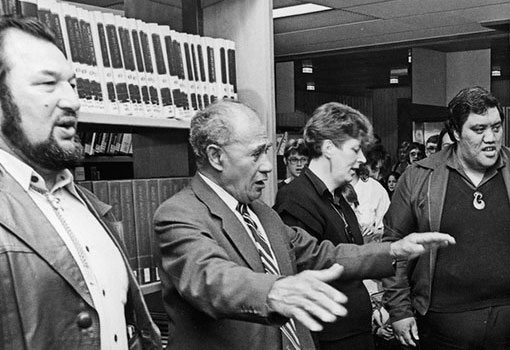
Far away city, but also close to home
By ODT - Sarah Boyack | Posted: Monday Mar 18, 2024
Far away they may be but Dunedin and Edinburgh share a special bond, Sarah Boyack writes.
Far away city, but also close to home | Otago Daily Times Online News (odt.co.nz)
The year 2024 marks 900 years since Edinburgh, the capital of Scotland, became a city.
In that time, it has grown to become a thriving, vibrant cultural hub attracting visitors from all over the world. Edinburgh is woven through the pages of British and world history, and the influence of some of its most famous residents can still be felt day to day.
We have always prided ourselves on our international links and our embrace of people and cultures from abroad. Nothing demonstrates this more than our enthusiastic embrace of our sister city, Dunedin.
It is slightly surreal to think about the notion that thousands of miles away from our capital city, there are also people doing their weekend shopping on Princes St, or walking along George St, or growing up on Corstorphine Rd.
Of course, Dunedin and Edinburgh’s shared connection goes far beyond street names.
It was the famous Robert Burns’ nephew, Thomas Burns, who helped shape the original colony in Otago. It is partly his original influence, from which Dunedin’s Edinburgh and Scottish connection comes.
Thomas Burns had a strong early influence on Dunedin, establishing Otago Boys’ High School and Otago Girls’ High School, both of which are still present today.
Despite his legacy, the name Dunedin and the more overt city links came from City Surveyor Charles Kettle, who wanted Dunedin to emulate the Scottish capital.
Kettle based his plans for Dunedin largely on Edinburgh’s New Town.
In contrast to the ancient walls and dark tall architecture of Edinburgh’s Old Town, the New Town stands as a testament to Georgian influence, filled with large townhouses and wide-open streets.
Walking through the New Town, it is easy to see how Kettle became so attached to its architectural style.
The name Dunedin, on the other hand, is in fact the original Gaelic name for Edinburgh, Dun Eideann. In naming the Otago settlement as Dunedin, Kettle ensured our cities would be intrinsically tied together.
Although Thomas Burns has a deeply entwined history with Dunedin, on Burns Night many of us in Edinburgh also tucked into our haggis and celebrated his most famous relative.
Robert Burns remains a huge part of Scottish and Edinburgh’s culture, and that too has found a place in your city.
Events celebrating Burns, such as the Robert Burns Poetry Competition, emphasise our deep cultural links.
Of course, St Andrew’s Day has also become a shared connection between our two cities.
The real St Andrew never set foot in Scotland. He was made the patron saint of Scotland only after Oengus II vowed to make St Andrew the patron saint if his army was successful in battle against the Angles.
Yet, his legacy and connections to Scotland have travelled the world and found their way into communities across the globe.
It is heart-warming to see how Dunedin’s population has embraced the traditions and festivities of St Andrew’s Day so fully. Ceilidhs and celebratory dinners are common sights across Scotland on St Andrew’s Day and the citizens of Dunedin have embraced this with amazing enthusiasm.
Over the years, our two cities have taken steps to acknowledge and strengthen these ties. A part of Edinburgh’s most famous sight stands at the top of Signal Hill, as a testament to the shared bond and history of our two cities.
Edinburgh Castle has stood over Edinburgh since the 11th century. Its history is intertwined with the city as a whole and for over 80 years now, a bit of that history has sat at the top of your own Signal Hill.
At the top of the hill lies "the stone from the rock on which Edinburgh Castle stands". This piece of stone is from the vast volcanic rock upon which Edinburgh Castle is built.
It was given by the city of Edinburgh to the city of Dunedin in 1941 to commemorate their shared connection. It is truly special to know that part of our most famous landmark also sits overlooking our sister city.
Of course, here in Edinburgh, we also received a part of Dunedin. A sculpture, crafted from magma rock from your Water of Leith, named Owheo, is displayed proudly near Edinburgh’s Leith Docks.
Dunedin, however, is so much more than just the connection to Edinburgh.
Its modern origins may lie in Edinburgh, but the city has formed a culture and history unique to itself.
Like Edinburgh, Dunedin is also a Unesco Creative City of Literature. Your city’s dedication to culture has gathered it international acclaim for its creative output.
Everything from literature, research, music, theatre, and sports is present in Dunedin. People travel from all over the globe to see what Dunedin has to offer.
In some ways, our two cities mirror each other.
Both are university cities, famed for their research. Both have deep cultural legacies that echo through their nations and beyond. Both have a rich history and vast natural beauty.
However, their connection goes deeper than mere similarities. Edinburgh and Dunedin have forged bonds that despite being on opposite sides of the Earth, have lasted hundreds of years and I am sure will last hundreds more.
We in Edinburgh are proud to have somewhere as friendly, cultured, and beautiful as a sister city.
I feel there is no better way to exemplify this belief than to quote Mark Twain’s view of Dunedin’s Scottish settlers: "They stopped here on their way from home to heaven — thinking they had arrived".
Sarah Boyack is a member of the Scottish Parliament for the Lothian Region.



